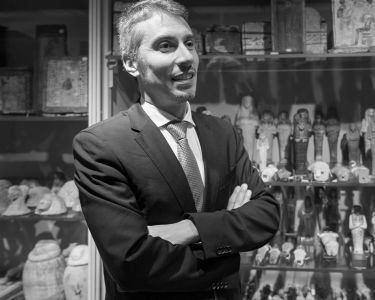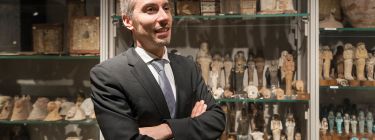
A millenary contemporaneity
Prof. Dr. Christian Greco, Director of Museo Egizio; Luca Dal Pozzolo, Director of Cultural Observatory of Piedmont at Fitzcarraldo Foundation, Turin
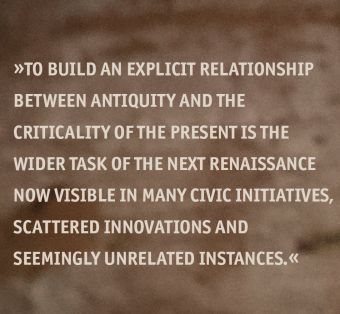
A millenary contemporaneity
The Egyptian Museum of Turin as a role model for societal dialogue and design of a desirable future
Archaeological museums have a great potential to express in the contemporary world, in showing how ancient societies have reacted to the challenges of sustainability and of their relationship with the climate, and how they have constructed cultural identities within an immense range of alternative ways of life and modes of thinking. To build an explicit relationship between antiquity and the criticality of the present is the wider task of the Next Renaissance now visible in many civic initiatives, scattered innovations and seemingly unrelated instances. This piece explains how this full vision is assumed by the Egyptian Museum and how it enriches with its cultural contribution of historical heritage the conceptual alternatives for the society at large in the design of a desirable future.
Heritages´ role for the future in crisis
As has been pointed out by anthropologists and sociologists, the present time has taken on an inflationary dimension which tends to overlap with the past and extends into the future, depriving it of its novelty and possible change: a formless and intrusive aorist that hinders the perception of the depth of history and the possibility/need for a different future. In this context, history has lost its role as the privileged key to interpreting society but, at the same time, the pandemic has highlighted the extreme fragility and uncertainty of a present that is anything but stable and predictable, furrowed by sudden fractures that open up disturbing trajectories. Moreover, a sneaking feeling of nostalgia for the pre-pandemic period and a recall to a presumed previous normality are all signs of how difficult it is to look straight at the heart of the current critical situation and imagine a possible new design for the future.In this condition, the crisis that has profoundly affected museums and cultural heritage as a result of the lockdowns runs the risk of being read from a reductive economic point of view, as the loss of an entertainment offer, the downsizing of a decisive asset of tourism, the economic damage by the suspension of activities.
Although all this is highly critical for the economic sustainability of museums, it is necessary to focus on the contribution and the cultural mission that museums and cultural heritage are able to offer in order to emerge from a crisis that shakes the 20th-century roots of our European societies.
On the other hand, at the international level, the idea that museums are theatres of memory where local and global identities are defined, and where different visions of the past and present meet the future, is now shared. This is precisely one of the central nodes to nurture a new impetus to address the current challenges to their complexity, and museums, libraries and cultural heritage are the privileged places to inhabit, share and structure the crossroads between multiple identities, new constructions of citizenship and paradigms for social, economic and cultural sustainability.The need to recover the perception of the depth of time and of a future that is to be built through the choice of alternatives is today one of the great challenges that museums and cultural heritage can help to address, provided they are radically transformed: overcoming the concept according to which artefacts are exhibited and separated from their historical context, showing them as objects of particular beauty. Isolating them from their original context does not allow us to interpret an era.
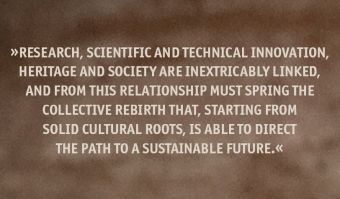
All this implies an epochal passage from a logic of relationship with the public centred on the exhibition, to a dimension of producers of content, both for the public in presence and for the public at a distance as the pandemic has shown.
Although there’s no better way to enjoy heritage than in person, not even with the most sophisticated digital technologies available, museums and cultural heritage can no longer be understood primarily as physical containers to be filled with tickets, but as cultural publishers, capable of graduating their reach and disseminating cultural products on all possible supports towards the public in presence, the distant public, schools, universities, civil society, sewing up the past with the dimension of the future.
Innovating the futures´ context for heritage: The Egyptian Museum's commitment
At this decisive point in time, the wider aim is to perceive museums as laboratories of innovation, fundamental for the harmonious development of society, and as reference institutions for the construction of contemporary knowledge that must now face new challenges. Only in this way will we truly give voice to what Article 27 of the Universal Declaration of Human Rights, approved on December 10, 1948 by the General Assembly of the United Nations, clearly reminds us. Research, scientific and technical innovation, heritage and society are inextricably linked, and from this relationship must spring the collective rebirth that, starting from solid cultural roots, is able to direct the path to a sustainable future.
The Egyptian Museum of Turin is leading in such innovations of the narrative of its contents and experimenting with new ways of relating to its public. Below is a brief description of some of the research guidelines inspired by the approach described above and the related actions that characterise the daily work of the museum.
The alliance between science and archaeology
The places that preserve the vestiges of the past can function as laboratories of innovation, experimenting with new techniques of investigation, through which it is possible to ‚interrogate‘ the objects in different ways. In this field, a real dialogue between humanists and scientists can produce truly innovative results, combining the potential offered by modern science with the questions suggested by objects but still unanswered. The time has come to introduce what we could call a digital humanism in which archaeologists, anthropologists, architects, historians, philosophers, neuroscientists, and psychologists work side by side with chemists, physicists, and computer experts to arrive at the definition of a new semantics that allows us to understand and process the complexity of reality. Starting from, for example, the exhibition Invisible Archaeology, the Egyptian Museum offers the heritage of questions, acquisitions, hypotheses and problems to be faced and explained to different audiences. The alliance with science for the reconstruction of the complexity of life and everyday life does not only imply a low invasiveness of the investigation and delicacy in the impact on the finds (a factor of absolute importance) but also the sharing of the knowledge and awareness of the public distant eras.
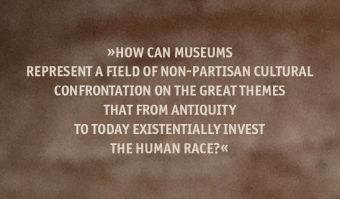
Science and the sacredness of life
The scientific investigation does not only concern objects and findings of material culture, but puts at the centre of its diagnostics life itself through the investigation of mummies and human remains that represent deposits of valuable information on lifestyles, diseases, genetic makeup, and so on. For the Egyptian Museum it is necessary that these investigations and analyses be returned to the public as a positive approach against the objective risk that every exhibition and every museum runs: the evocation of the gaze of the Gorgon that petrifies every object on which it rests. Fighting the dehumanisation of the mortal remains of life, degraded to crystallised relics, no longer worthy of the pietas that was among the reasons for their coming into our presence, is an ethical commitment assumed by the Museum, starting with the debate on the appropriate way to display human remains. Explaining how scientific and genetic investigations with similar methods can be applied today—not only to lives extinguished thousands of years ago but also to the recent deaths of migrants at the bottom of the Mediterranean Sea in order to give them back their names and identities—opens novel societal questions, rooted in the distant past and facing our future and that of our children.
The Egyptian museum as part of a living geography
An archaeological museum dedicated to Egypt runs the risk of being placed in a subsidiary temporal sequence—before the Greeks—but in an ancient geography, no longer related to contemporaneity. Precisely to prevent this possible interpretation, the policy of recent years has focused—also with promotional and marketing initiatives—on the relationship between the museum and Egyptian, Arabic-speaking and African communities in Italy and Europe, to allow opportunities for cultural recognition and pride, for in-depth studies of history and for comparison between places of origin and residence. Egypt is not only a region of history, or a place of excavation and scientific cooperation with which the Museum shares intense exchanges, but one of the most influential countries in the geopolitics of the Mediterranean and an inevitable point of reference for thousands of new citizens. An effective reception policy and the construction of an intercultural society are also based on the recognition of the cultural values of others, on their valorisation, on the possibility that cultural heritages can be reciprocally known and shared, negotiated in their implications and underlying values, and not used to build oppositional, exclusionary identity exoskeletons based on the denial of the other.
The contemporaneity of the past.
The commitment to proposing innovative trajectories, in extreme synthesis, is aimed at making evident to the different audiences—with every, narrative, literary and technological instrument available—how archaeology, probing ancient time, contributes to questions about and redefines the present. This is a necessity as well as a challenge to museums if they opt to be a driver for the Next Renaissance Europe: How can museums represent a field of non-partisan cultural confrontation on the great themes that from antiquity to today existentially invest the human race? The most recent one is the overwhelming transformative power of our societies, which puts at risk the sustainability, not of the planet but of the human species in its development trajectories. The Egyptian Museum hopes to be an inspiration and living lab for museums across the globe, extending here and now an invitation to collaborate and co-create the future of museums for the future of a resilient society. In fact, the scientific investigation in archaeology is one of the most interesting frontiers in the challenges of contemporaneity.
Luca dal Pozzolo
Luca Dal Pozzolo, 1956, Architect, co-funder and responsible for Research of Fitzcarraldo Foundation. From 1998 is Director of Piedmont Cultural Observatory and member of the Scientific Committee of CCW, Cultural Welfare Centre and Member of the cultural Commission of the European Institute of Design (IED). He teaches in Bologna Economic Faculty, (Regional Cultural Policies), in Politecnico di Torino (master in museography) and in Lugano, Master in Advanced Studies in Cultural Management.He designed many museum’s exhibitions and cultural institutions and published many articles and books on cultural economics, museums and Heritage, (Esercizi di sguardo, 2019, Il patrimonio culturale tra memoria, lockdown e futuro, 2021), and is directing the book series Geografie Culturali, for the Italian publisher publisher Editrice Bibliografica.
Picture © Fondazione Fitzcarraldo
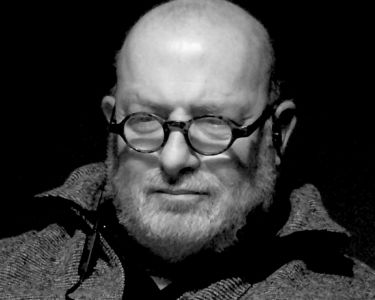
Christian Greco
Born in Arzignano (VI) in 1975, Christian Greco has been Director of the Museo Egizio since 2014. He managed a refurbishment of the museum building and a renovation of its galleries, completed on March 31st 2015, whereby the Museo Egizio was transformed from an antiquities museum into an archaeological museum. Trained mainly in the Netherlands, he is an Egyptologist with vast experience working in museums. He curated many exhibition and curatorial projects in the Netherlands (Rijksmuseum van Oudheden, Leiden; Kunsthal, Rotterdam; Teylers Museum, Haarlem), Japan (Okinawa, Fukushima, Takasaki and Okayama museums), Finland (Vapriikki Museum, Tampere), Spain (La Caixa Foundation) and Scotland (National Museum of Scotland, Edinburgh).While at the head of the Museo Egizio, he has set up important international collaborations with museums, universities and research institutes all across the world. Christian Greco is currently teaching courses in the material culture of ancient Egypt and museology at the University of Turin and Pavia, and he is Visiting Professor at the New York University in Abu Dhabi. Fieldwork is particularly prominent in Greco’s curriculum. For several years, he was a member of the Epigraphic Survey of the Oriental Institute of the University of Chicago in Luxor. Since 2011 he has been co-director of the Italian-Dutch archeological mission at Saqqara. Greco’s published record includes many scholarly essays and writings for the non-specialist public in several languages. He has also been a keynote speaker at a number of Egyptology and museology international conferences.
